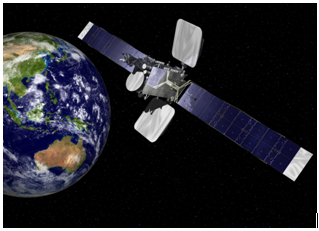More Other Countries IP Communications Stories
June 23, 2009
MEASAT-3a Satellite Launch Successful

TMCnet Contributor
Orbital Sciences Corporation reportedly announced that the MEASAT (News - Alert)-3a satellite, which it designed, built, integrated, tested and based on its STAR-2 platform, was successfully launched into orbit for MEASAT Satellite Systems by a Land Launch Zenit-3 rocket launched from the Baikonur Cosomodrome in Kazakhastan.
Officials at Orbital claim that latest health checks have revealed that the satellite is functioning as per plans, and the Star 2 platform includes thrusters to retain geostationary position for 15 years, solar panels to deliver 3.6 kilo Watt of electrical power, and an Apogee Kick Motor that gets ignited once the satellite reaches its primary orbital apogee position, which is the maximum possible distance it can initially travel away from the earth’s surface.
“We are very pleased for our MEASAT customer that the satellite deployment was successful and that the early in-orbit tests are progressing well,” said Michael Larkin, executive vice president and general manager of the Space Systems Group at Orbital. “We look forward to completing the testing process and transferring operational control to MEASAT later this summer.”

Orbital says that this is MEASAT’s fourth satellite and it will supply C band communications services throughout Asia, the Middle East and Africa via its 12 C band transponders, and KU band direct to home television broadcasting to Malaysia and Indonesia via its 12 Ku band transponders. The below K band operates in frequencies from 12 to 18 GHz, and C band is a part of the electromagnetic spectrum in the microwave frequency range from 4 to 8 GHz, works consistently even in bad weather, and is more resilient under adverse conditions than KU band.
Company sources say that the satellite’s final destination will be in Geo stationary orbit, which is over the Equator at an altitude of 35,786 km (22,236 mi) above sea level, at ninety one point five degrees East longitude (91.5ºE) in several weeks from now, and covers Southeast Asia.
Orbital has nine GEO spacecraft currently in different stages of design, production and testing at its manufacturing facility for customers such as SES Global, Intelsat and several regional satellite service operators around the world, say official sources, and it also has a
commercial communications satellite business wing in addition to its civil government space and Earth science satellites. Its next pipeline target segment is the national security space systems market.
Don’t forget to check out TMCnet’s White Paper Library, which provides a selection of in-depth information on relevant topics affecting the IP Communications industry. The library offers white papers, case studies and other documents which are free to registered users.
Vivek Naik is a contributing editor for TMCnet. To read more of Vivek's articles, please visit his columnist page.
Edited by Michael Dinan



